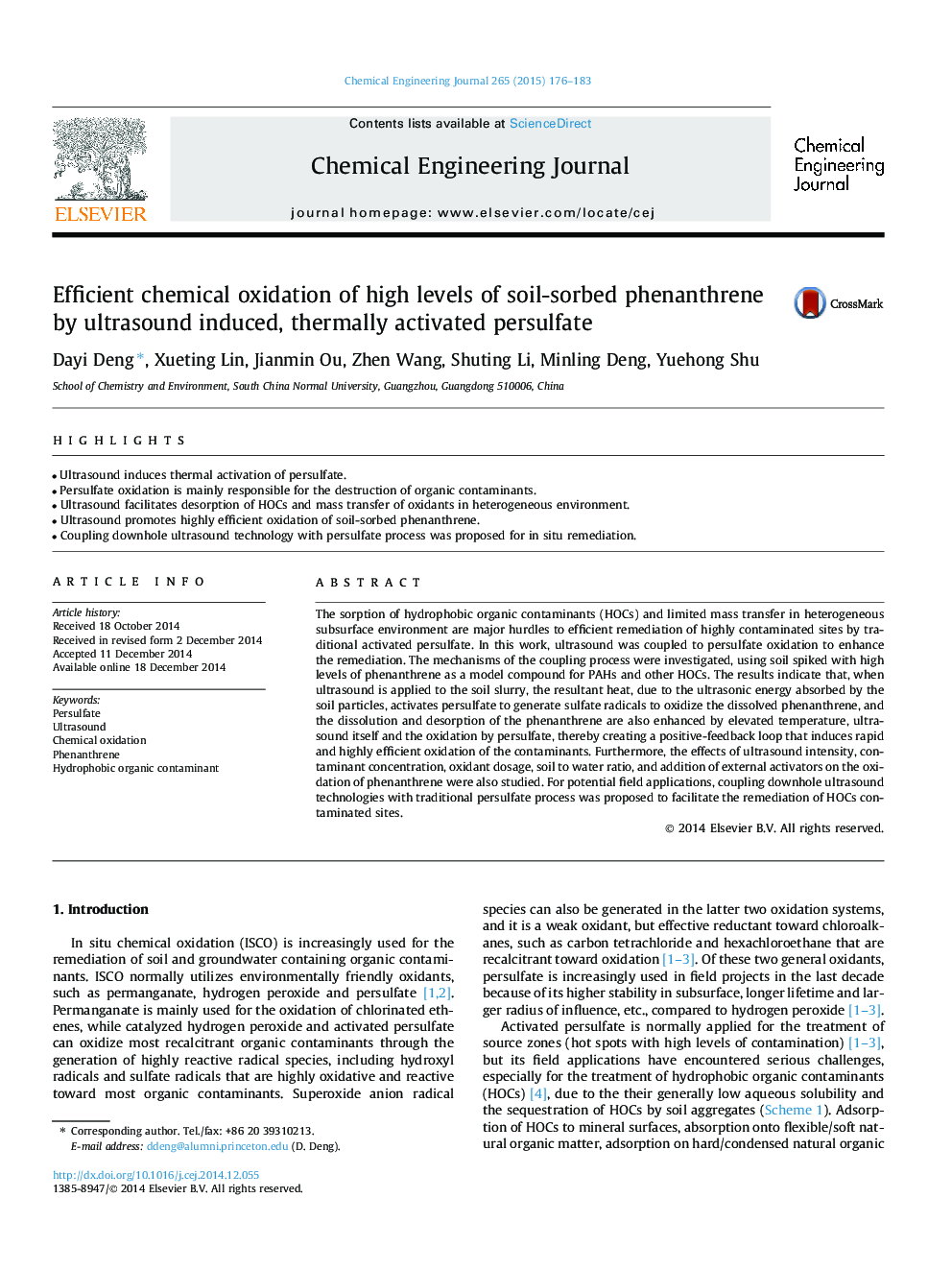| Article ID | Journal | Published Year | Pages | File Type |
|---|---|---|---|---|
| 146651 | Chemical Engineering Journal | 2015 | 8 Pages |
•Ultrasound induces thermal activation of persulfate.•Persulfate oxidation is mainly responsible for the destruction of organic contaminants.•Ultrasound facilitates desorption of HOCs and mass transfer of oxidants in heterogeneous environment.•Ultrasound promotes highly efficient oxidation of soil-sorbed phenanthrene.•Coupling downhole ultrasound technology with persulfate process was proposed for in situ remediation.
The sorption of hydrophobic organic contaminants (HOCs) and limited mass transfer in heterogeneous subsurface environment are major hurdles to efficient remediation of highly contaminated sites by traditional activated persulfate. In this work, ultrasound was coupled to persulfate oxidation to enhance the remediation. The mechanisms of the coupling process were investigated, using soil spiked with high levels of phenanthrene as a model compound for PAHs and other HOCs. The results indicate that, when ultrasound is applied to the soil slurry, the resultant heat, due to the ultrasonic energy absorbed by the soil particles, activates persulfate to generate sulfate radicals to oxidize the dissolved phenanthrene, and the dissolution and desorption of the phenanthrene are also enhanced by elevated temperature, ultrasound itself and the oxidation by persulfate, thereby creating a positive-feedback loop that induces rapid and highly efficient oxidation of the contaminants. Furthermore, the effects of ultrasound intensity, contaminant concentration, oxidant dosage, soil to water ratio, and addition of external activators on the oxidation of phenanthrene were also studied. For potential field applications, coupling downhole ultrasound technologies with traditional persulfate process was proposed to facilitate the remediation of HOCs contaminated sites.
